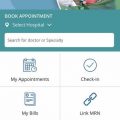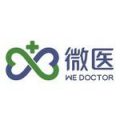Amidst rapid technological evolution, the healthcare sector is undergoing pivotal change driven by Software as a Service (SaaS). SaaS entails third-party hosted software distribution via the internet, gaining prominence across industries, including healthcare. Amidst perpetual challenges of costs, accessibility, efficacy, and data management, integrating SaaS offers a promising solution. This avenue not only addresses challenges but also fosters innovation in patient care and operational processes.

SaaS in Healthcare: An Overview
The contemporary healthcare environment necessitates effortless information access, streamlined communication, and proficient patient management. SaaS technology presents a dynamic remedy by enabling healthcare providers to attain software applications through cloud-based access, obviating the necessity for localized installations. This departure from conventional software paradigms, which entailed substantial initial investments in hardware and infrastructure, is noteworthy. With healthcare systems progressively leaning towards digital innovations to augment their offerings, SaaS provides an adaptable, economically viable, and scalable avenue to fulfill these requisites.
Key Benefits of SaaS in Healthcare
The incorporation of SaaS within the healthcare sector offers a myriad of benefits. Among these, prominent is its capacity for cost-effectiveness. In contrast to conventional software paradigms that necessitate substantial capital outlay, SaaS operates on a subscription-based pricing framework. This obviates the requirement for organizations to make extensive investments in hardware and the ongoing upkeep thereof. Furthermore, SaaS’s cloud-based infrastructure bestows unparalleled accessibility. Healthcare professionals gain the capability to access vital patient data and applications from diverse locations, thus fostering seamless collaboration and facilitating remote patient care. The expeditious implementation of solutions and automated updates further enhance the merits of SaaS, affording healthcare establishments the ability to swiftly deploy novel solutions devoid of laborious installation processes.
Specific Use Cases of SaaS in Healthcare
Electronic Health Records (EHR) systems exemplify a compelling illustration of how SaaS is driving a paradigm shift within the healthcare sector. These systems serve as central repositories for patient data, affording healthcare providers seamless access to meticulously maintained and current medical records. This capability substantially contributes to well-informed decision-making processes, consequently augmenting patient outcomes.
Concurrently, the surge in popularity of telemedicine and virtual care, particularly within the context of recent global developments, underscores the pivotal role of SaaS. By leveraging SaaS-based telemedicine platforms, remote consultations are facilitated, dismantling access barriers and expanding the reach of healthcare services. Moreover, hospital management systems powered by SaaS intricately optimize administrative operations encompassing appointment scheduling and billing management, ultimately culminating in an elevated patient experience. One of the most specific and impactful use cases of SaaS in the healthcare industry is the application of “payer-provider analytics data software.” This advanced software solution plays a crucial role in enhancing the collaboration between healthcare payers and providers while optimizing operational efficiency.
Challenges and Considerations
Although the advantages of incorporating SaaS are readily apparent, the integration of this technology into the healthcare sector is not devoid of hurdles. Paramount among these are concerns pertaining to data security and privacy, owing to the inherently sensitive nature of patient information. Healthcare providers are obligated to guarantee adherence to regulatory frameworks like HIPAA and to deploy robust encryption methodologies in order to ensure the safeguarding of patient data. Furthermore, the assimilation of SaaS solutions with pre-existing legacy systems can introduce intricate technical challenges. Effecting a seamless transition that upholds the integrity of data demands meticulous planning and adept coordination. Moreover, the reliance on internet connectivity gives rise to apprehensions about dependability, underscoring the imperative for contingency strategies aimed at minimizing instances of service disruption.
Future Trends of SaaS in Healthcare
In the forthcoming period, the convergence of Software as a Service (SaaS) with the healthcare sector is primed to encompass cutting-edge technologies, notably Artificial Intelligence (AI) and Machine Learning (ML). AI-fueled diagnostics have the potential to enhance disease detection accuracy and refine treatment planning, whereas ML algorithms hold the capacity to mechanize administrative functions, thereby affording healthcare practitioners more time to direct their attention toward patient care. Moreover, the pivotal role of predictive analytics is set to be underscored in healthcare planning, empowering establishments to foresee patient requirements, optimize resource allocation, and augment the overall caliber of service provision.
Conclusion
The integration of SaaS in healthcare signifies a pivotal shift in patient care and administrative processes. SaaS offers cost-effectiveness, accessibility, and scalability, appealing to healthcare providers striving for excellence. However, these benefits must harmonize with considerations like data security and integration complexities. By embracing SaaS’s transformative potential, healthcare can optimize operations, elevate patient experiences, and contribute to industry evolution. Undoubtedly, healthcare’s future is intertwined with SaaS innovation.






